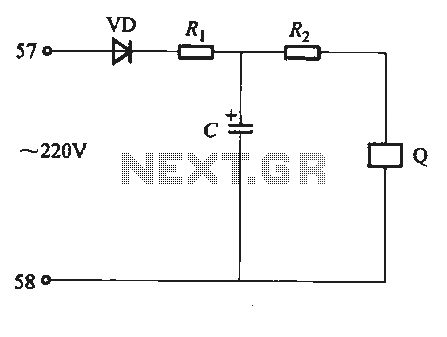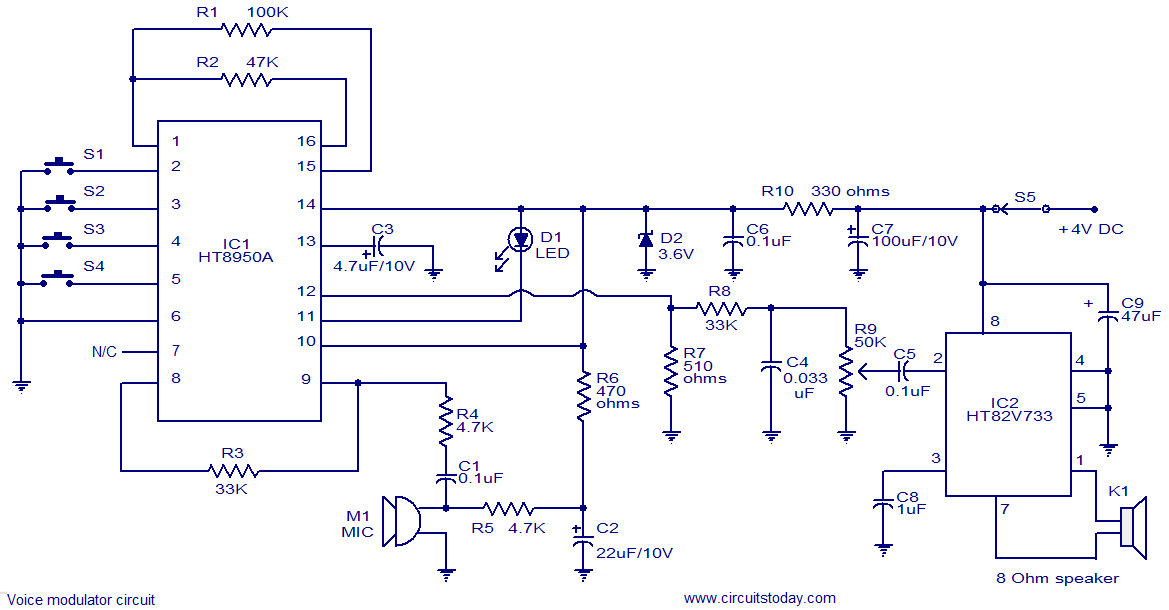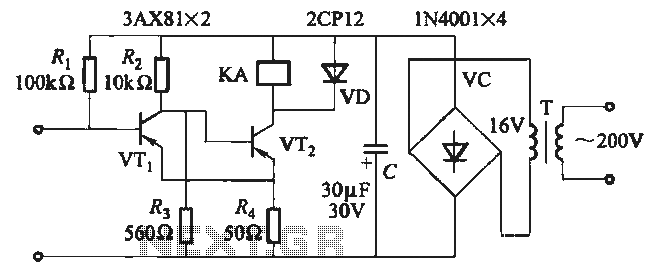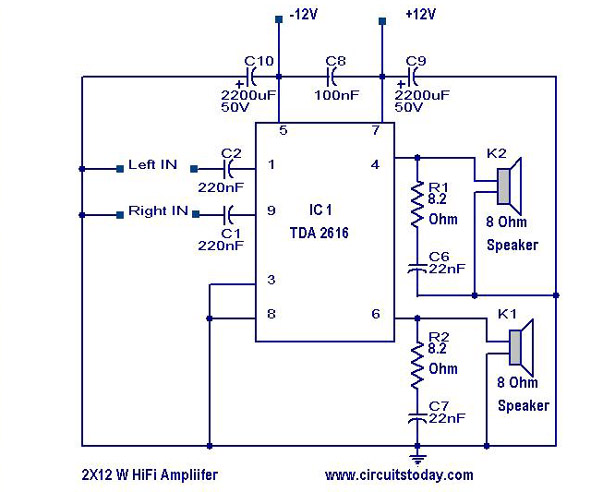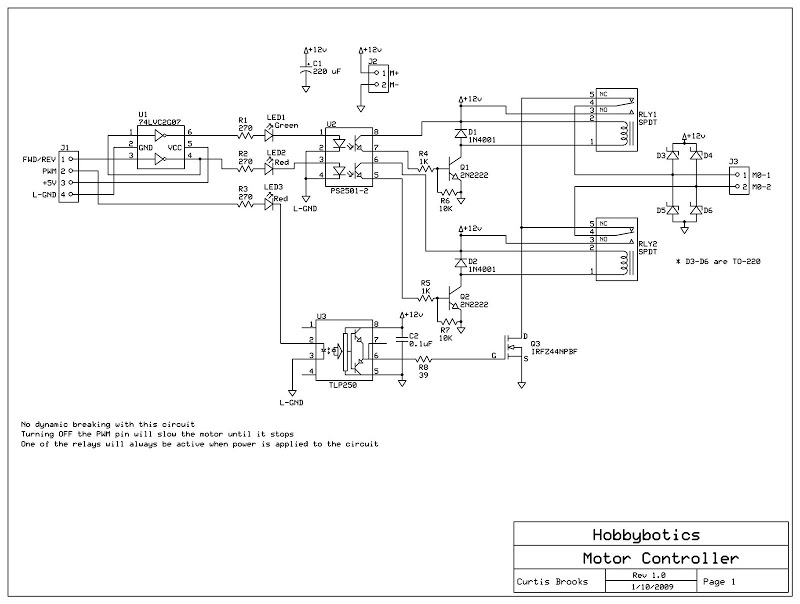
Vibration burglar alarm circuit
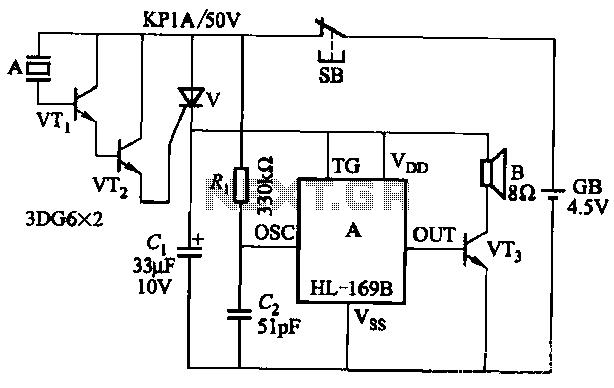
The circuit utilizes the HL-169B voice alarm integrated circuit (IC). It is designed for use in security applications, including glass doors, car doors, and windows, to act as a burglar alarm. When a thief applies force to these items, the vibration is detected by a piezoelectric ceramic sheet, which activates a crystal thyristor. This triggers the alarm to emit a voice alert stating "Catch thieves!" The alarm can be deactivated by pressing the release button (SB).
The HL-169B voice alarm circuit is a versatile and effective security solution for various applications. The core component, the HL-169B IC, is specifically engineered to detect vibrations and respond with a pre-recorded voice message when an intrusion is detected. The piezoelectric ceramic sheet acts as a sensor, converting mechanical vibrations caused by forceful attempts to open doors or windows into an electrical signal.
When the circuit is armed, any significant vibration will cause the piezoelectric element to generate a voltage signal. This signal triggers the crystal thyristor, which completes the circuit and allows current to flow to the alarm output. The output is connected to a speaker or buzzer that plays the pre-recorded message, effectively alerting nearby individuals of a potential break-in.
The inclusion of a release button (SB) provides a means to deactivate the alarm system once the situation is resolved or if it was triggered accidentally. This feature enhances the usability of the alarm system, ensuring that users can easily reset the system without the need for complex procedures.
For installation, the circuit should be connected to a suitable power supply, and the piezoelectric sensor must be securely mounted to the surface of the door or window to ensure reliable operation. Proper placement of the sensor is critical for optimal performance, as it must be able to detect vibrations effectively.
Overall, the HL-169B voice alarm circuit is a practical solution for enhancing security in residential and automotive environments, providing both audible alerts and an easy method for deactivation.It uses the HL-169B-type voice alarm IC A. It can be used for safe, glass doors, car doors and windows burglar alarm and other occasions. When the thieves beat with violence such items that vibration of the piezoelectric ceramic sheet A, crystal thyristor V turned on, the alarm issued a "Catch thieves!" The voice alarm. Only press the release button SB, the alarm was lifted.
The HL-169B voice alarm circuit is a versatile and effective security solution for various applications. The core component, the HL-169B IC, is specifically engineered to detect vibrations and respond with a pre-recorded voice message when an intrusion is detected. The piezoelectric ceramic sheet acts as a sensor, converting mechanical vibrations caused by forceful attempts to open doors or windows into an electrical signal.
When the circuit is armed, any significant vibration will cause the piezoelectric element to generate a voltage signal. This signal triggers the crystal thyristor, which completes the circuit and allows current to flow to the alarm output. The output is connected to a speaker or buzzer that plays the pre-recorded message, effectively alerting nearby individuals of a potential break-in.
The inclusion of a release button (SB) provides a means to deactivate the alarm system once the situation is resolved or if it was triggered accidentally. This feature enhances the usability of the alarm system, ensuring that users can easily reset the system without the need for complex procedures.
For installation, the circuit should be connected to a suitable power supply, and the piezoelectric sensor must be securely mounted to the surface of the door or window to ensure reliable operation. Proper placement of the sensor is critical for optimal performance, as it must be able to detect vibrations effectively.
Overall, the HL-169B voice alarm circuit is a practical solution for enhancing security in residential and automotive environments, providing both audible alerts and an easy method for deactivation.It uses the HL-169B-type voice alarm IC A. It can be used for safe, glass doors, car doors and windows burglar alarm and other occasions. When the thieves beat with violence such items that vibration of the piezoelectric ceramic sheet A, crystal thyristor V turned on, the alarm issued a "Catch thieves!" The voice alarm. Only press the release button SB, the alarm was lifted.
